Have you ever noticed how some children seem to radiate joy and positive energy, while others appear more withdrawn or stressed? As a parent and someone who has a deep interest in mindfulness, I’ve discovered that this difference often comes down to what we call “vibration” – the energy and emotional frequency at which we operate. Just like a musical instrument needs proper tuning, our children’s emotional and energetic well-being requires careful attention and nurturing.

What Does “Raising Vibration” Mean?
Before we dive into the practical steps, let’s understand what we mean by “vibration.” In simple terms, it’s the overall emotional and energetic state of a person – their level of positivity, peace, and well-being. Research shows that nearly 20% of children aged 3-17 experience mental, emotional, or behavioural disorders , making it more important than ever to help our children maintain high vibrational states.

Understand the Power of Your Own Vibration
As parents, we are our children’s first and most influential teachers. Research indicates that children are highly attuned to their parents’ emotional states and often mirror them. As parents, we often forget how much our energy affects our children. I noticed this profoundly one morning when I was stressed about work deadlines. My boys, usually manageable in the morning routine, were suddenly more chaotic and resistant. That’s when it hit me – they were simply mirroring my frantic energy.
To raise your child’s vibration, start with yourself. Here’s how I learned to manage and elevate my own vibration:
- Practice daily meditation or mindfulness – Before my boys wake up, I take 10 minutes for meditation or deep breathing. This simple practice helps me start the day centred and calm.
- Maintain a positive outlook – Throughout the day, I pause to assess my energy. Am I rushing? Stressed? Angry? These quick check-ins help me adjust my vibration before it affects my boys.
- Address your own emotional challenges – I’ve learned to openly discuss my feelings with my sons. I will let them know when I’m feeling overwhelmed and that I just need a little time to myself. They will give me space to do this.
- Physical reset – When I feel my energy dropping, I’ll do quick exercises where I can and am able to – a quick home workout or a brief walk. My boys often join in, turning it into a fun family activity.

Remember: Your child is constantly absorbing your energy. When you maintain a high vibration, you naturally help elevate theirs.

Create a Positive Environment
The environment we create for our children significantly impacts their emotional and psychological well-being. Living with two energetic boys taught me that environment isn’t just about physical space – it’s about creating an atmosphere that supports their natural enthusiasm while promoting calm when needed. Studies indicate that structured, positive environments promote better behaviour and development in children.
Here’s how to create a high-vibrational space:
- Use soft, calming colours in their room – Colours like soft blues, gentle greens, and pale yellows create a peaceful environment that reduces overstimulation, promotes restful sleep, and encourages creativity. Transforming their space with soothing colours can lead to a more harmonious and nurturing atmosphere, allowing them to thrive.
- Sound Management – We use different types of music throughout the day: Upbeat music for cleaning time, calming instrumental music during homework, nature sounds during bedtime routine
- Reduce clutter and organise spaces – With boys’ toys everywhere, we implemented the “one in, one out” rule and created easy-to-use storage solutions that make cleanup fun rather than a chore.
- Create designated areas for different activities – We designated specific areas for active play (the backyard, playroom) and quiet activities (reading, craft corner). This helps my boys understand when it’s time to release energy and when to calm down.
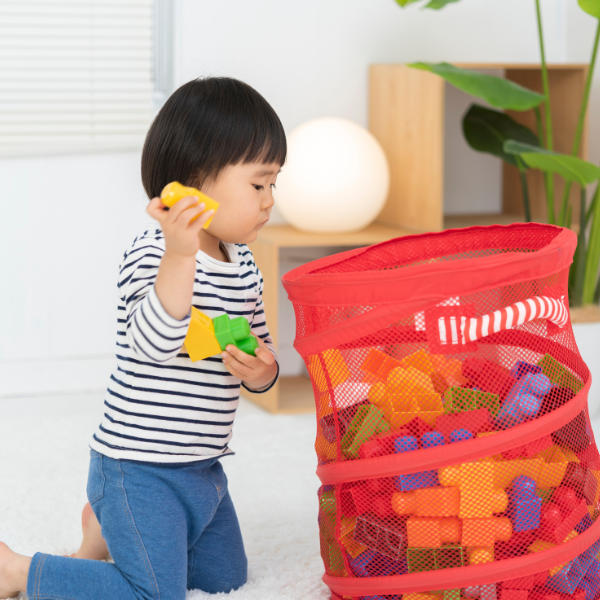
A safe and comfortable space reduces stress and promotes feelings of peace and contentment, which are high-vibration states.

Teach Mindful Breathing and Affirmations
Mindfulness and positive self-talk are powerful tools for raising vibration. Teaching active boys to be mindful might seem like an impossible task, but I’ve found some incredibly effective methods that work with their natural energy rather than against it. Research shows that mindful parenting practices can reduce anxiety, depression, and disruptive behaviours in children.
Here’s what works for my boys:
- Superhero Breathing – We pretend to be superheroes charging up our powers with deep breaths. This makes mindful breathing exciting and engaging.
- Active Affirmations – Instead of sitting still, we jump or march while saying positive affirmations: “I am strong!” (jump) “I am brave!” (jump)
- Mindful Movement Games – We practice “Freeze Dance Meditation” where they dance wildly, then freeze and notice their breathing and body sensations.
- Bedtime Breathing Routine – We end each day with “Dragon Breath” exercises, where they exhale forcefully like a dragon, naturally calming their system for sleep.

Teaching children mindful breathing and positive affirmations is a powerful way to enhance their emotional well-being and raise their vibration. Mindful breathing helps them centre themselves and manage anxiety, creating emotional regulation and resilience. Meanwhile, positive affirmations empower children to replace negative self-talk with uplifting beliefs, boosting their confidence and self-worth. Together, these practices create a nurturing environment where children feel safe to express themselves and explore their potential. I would definitely recommend starting this very early, when children are young! Early exposure will enhance their ability to focus and reduce stress whilst also encourage a lifelong appreciation for mindfulness, ultimately raising their vibration and promoting a more joyful and balanced life.


Encourage Physical Activity and Healthy Habits
Physical activity is crucial for maintaining high vibration. As a parent of two high-energy boys, I’ve learned that physical activity isn’t just about “burning energy” – it’s about nurturing their body-mind connection and channeling their natural enthusiasm productively.
Here is how we as a family incorporate this:
- Morning Energy Release – When I sense the kids are anxious or mood is low, I will start the day with a 10-minute “wild movement session” – dancing to some upbeat music, jumping, or running in place. This helps prevent before-school jitters.
- Natural Movement Opportunities – Instead of constantly saying “stop jumping/running/climbing,” we create safe spaces for these natural young children behaviours. I have set up an obstacle course in the garden and have an area indoors with mats.
- Structured Activity Balance – We balance organised sports with free play. My boys are part of the local cricket and football club. I have kept this consistent and joined them at a very young age so this has become part of their norm. It’s also important to include individual activities for self-regulation and unstructured outdoor time for creativity.
- Nutrition for Energy Management – I’ve noticed how much food choices impact their energy and mood. When we started prioritising protein-rich breakfasts and healthy snacks, their energy levels became more stable, and they were less prone to those mid-afternoon meltdowns. For example, switching from sugary cereal to scrambled eggs and toast made a huge difference in how focused and calm they were during school mornings. Protein takes longer to digest, providing a steady release of energy and keeping kids fuller for longer. It also supports brain function, improving focus, mood, and concentration. Follow for a more detailed blog on this coming soon.

- Regular sleep schedules – A regular sleep schedule helps to regulate the body’s circadian rhythm, the internal clock that governs sleep-wake cycles. When children go to bed and wake up at the same time each day, their bodies start to recognise these patterns, leading to better quality sleep.
Tips for Establishing a Regular Sleep Schedule
- Set a Fixed Bedtime and Wake Time: Choose a bedtime and wake-up time that allows for the recommended amount of sleep for your child’s age. Consistency is key, even on weekends
- Create a Calming Bedtime Routine: Establish a calming pre-sleep routine that includes winding down activities such as reading, gentle stretches, or quiet playtime. This signals to the body that it’s time to relax.
- Limit Screen Time Before Bed: Reduce exposure to screens at least an hour before bedtime, as blue light from devices can interfere with melatonin production and disrupt sleep.
- Create a Sleep-Friendly Environment: Ensure their bedroom is conducive to sleep by keeping it dark, quiet, and at a comfortable temperature. Consider using blackout curtains and white noise machines if necessary.
- Encourage Daylight Exposure: Ensure your child gets plenty of natural light during the day to help regulate their internal clock. Outdoor playtime not only promotes physical health but also helps establish a healthy sleep-wake cycle.
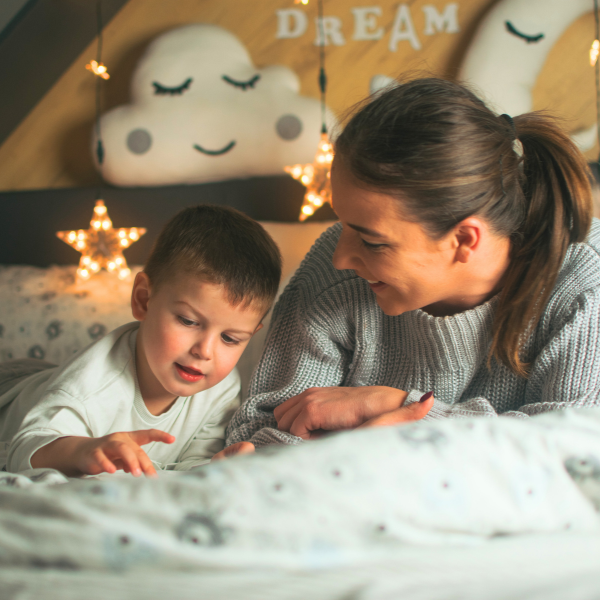

Promote Gratitude and Kindness
As a mum, I’ve discovered that teaching gratitude and kindness requires creativity and action. Honestly speaking my boys weren’t interested in sitting quietly and writing thank-you notes, but they’ve embraced gratitude through more dynamic approaches. Gratitude and kindness are essential for raising a child’s vibration, as these practices foster positivity, empathy, and emotional resilience.
Gratitude Activities
- Thankfulness Walks: Take walks and point out things they appreciate in nature or their surroundings.
- Gratitude Rocks: Collect and paint rocks with words or symbols representing what they’re grateful for.
- Gratitude Collage: Create a visual collage or scrapbook with pictures and drawings of things they appreciate.
Kindness Activities
- Kindness Bingo: Create bingo cards with acts of kindness for children to complete, celebrating when they achieve bingo.
- Secret Acts of Kindness: Encourage children to perform discreet acts of kindness, like leaving notes or helping without being asked.
- Storytime with Kindness Themes: Read stories that highlight gratitude and kindness, discussing the lessons afterward.
Family Rituals
- Dinner Table Gratitude: Share one thing each family member is grateful for during mealtime.
- Toy or Clothing Donations: Involve children in selecting items to donate to those in need.
- Helping at Home: Assign small tasks that allow children to contribute to the family and see the impact of their efforts.
- Community Service: Participate in family-friendly volunteering activities to teach kindness on a broader scale.

When children practice gratitude, they shift their focus from what they lack to what they appreciate, creating a mindset of abundance and joy. Acts of kindness not only enhance their self-worth but also strengthen their social bonds, leading to feelings of empathy and compassion. Together, these practices create a high-vibration atmosphere where children feel happy, fulfilled, and empowered to spread positivity in their interactions with the world.

Limit Exposure to Negative Influences
Managing negative influences while raising children in the digital age has been one of my biggest challenges. Research indicates that excessive screen time can increase anxiety and depression in children, but completely avoiding technology isn’t realistic. As a parent, I’ve learned that the key isn’t banning technology altogether but teaching children how to use it wisely while setting healthy boundaries.
Here are some ideas that I have used and have worked well for me:
- Screen Time Strategy:
- Set Daily Screen Limits – 1 hour on school nights, 2 hours on weekends
- Created “Tech Zones” in the house where devices are allowed such as bedrooms, family dinners, or during outdoor playtime.
- Implemented a token system where active play earns screen time
- Set up “Digital Detox Adventures” on weekends
- Content Filtering System:
- Pre-screened YouTube channels and created safe playlists – Introduce apps Duolingo or Khan Academy, which focus on learning and creativity. Shows like Bluey or Wild Kratts encourage kindness, teamwork, and curiosity.
- Installed parent controls on all devices
- Regular family discussions about online content
- Alternative Entertainment:
- Built a “Boredom Buster Station” filled with non-digital activities
- Created themed activity boxes for different interests
- Organised regular outdoor exploration time
- Social Influence Management:
- Ask Questions – After they watch a show or use an app, ask, “What did you like about it?” or “Did it make you feel good?”
- Regular check-ins about school friendships
- Building confidence through positive social activities – checking what’s going on locally such as sports community events, charity runs etc
By setting boundaries, encouraging quality content, and promoting offline activities, you can help your child develop a healthy relationship with technology while protecting their emotional well-being.
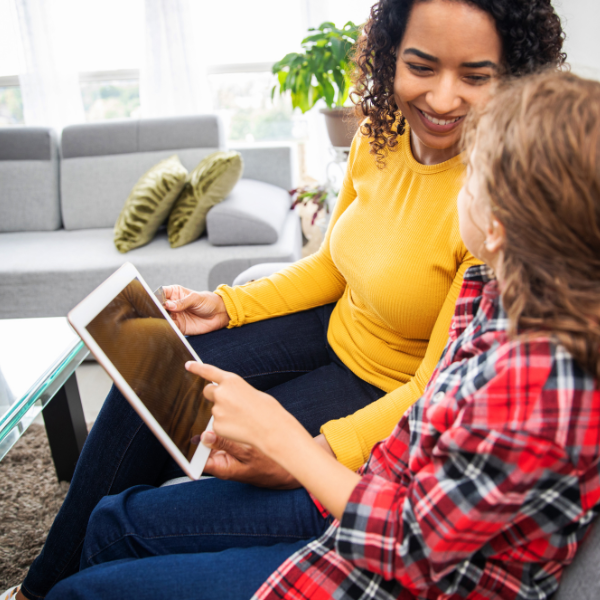
These strategies not only reduce exposure to negativity but also create opportunities for joy, learning, and connection, ultimately raising their vibration.

Encourage Personal Growth and Self-Discovery
Encouraging personal growth and self-discovery in children is essential for helping them develop autonomy, confidence, and a sense of purpose. Research shows that self-regulated learning—where children take an active role in managing their own learning and behaviour—fosters autonomy and self-efficacy, which are critical for long-term success and emotional well-being. Children thrive when they feel capable and independent, and this applies to both boys and girls. By providing opportunities for self-directed exploration, problem-solving, and decision-making, you empower them to take ownership of their growth. Here’s an expanded look at how to encourage personal growth and self-discovery, with practical examples:
- Self-Regulation Through Daily Activities
- Emotion Check-Ins – Teach children to identify and name their emotions.
- Problem-Solving Practice – When they face a challenge, guide them to brainstorm solutions instead of solving it for them.
- Encourage Decision-Making and Responsibility
- Choice Boards – Create a board with options for activities, chores, or snacks, and let them choose. For example, “Would you like to clean your room first or help set the table?”
- Involve Them in Planning – Let them help plan family activities, like deciding what to cook for dinner or choosing a weekend outing.
- Age-Appropriate Responsibilities – Assign tasks that match their abilities, such as feeding a pet, packing their school bag, or watering plants.
- Encourage Self-Assessment and Reflection
- Reflection Journals – Encourage them to write or draw about their day, focusing on what they learned, what they enjoyed, and what they’d like to improve.
- Goal Setting – Help them set small, achievable goals, like learning to tie their shoes or finishing a book. Celebrate their progress to reinforce their efforts.
- “What Did You Learn?” Conversations – After completing a task or activity, ask questions like, “What went well?” or “What would you do differently next time?”
- Provide Opportunities for Skill-Building
- Life Skills – Teach them practical skills like cooking, sewing, or gardening. For example, let them help prepare a simple meal or plant a small herb garden.
- Hobbies and Interests – Support their interests by enrolling them in classes or providing resources. For instance, if they love cricket, find a local cricket club and get them started.
- DIY Projects – Work on simple DIY projects together, like building a birdhouse or creating a scrapbook. These activities encourage creativity and hands-on learning.
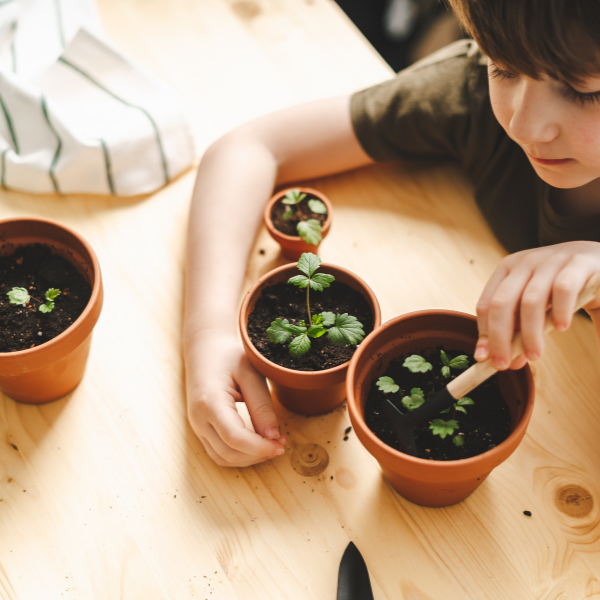

Lead by Example and Stay Consistent
One of the most powerful lessons in parenting is that children learn far more from what we do than what we say. They are constantly observing us—our habits, reactions, and how we navigate life. Research confirms that consistent parenting helps children develop self-regulation, independence, and emotional resilience. By modeling the behaviours and values, we create a living example for them to follow. Here’s an expanded look at how leading by example and staying consistent can shape children’s growth and raise their vibration with relatable examples.
- Modeling Positive Behaviours
When children see you practicing positivity, patience, and kindness, they internalise these high-vibration behaviours. This creates a foundation of emotional resilience and optimism.
- Managing Emotions – If you want your child to handle frustration calmly, show them how you do it. For instance, if you’re stuck in traffic, instead of yelling, say, “This is frustrating, but I’ll take a deep breath and stay patient.”
- Healthy Habits – If you want them to eat nutritious foods, let them see you enjoying fruits, vegetables, and balanced meals. For example, “I’m having an apple because it gives me energy and keeps me healthy.”
- Kindness and Empathy – Demonstrate kindness in your daily interactions. For example, let them see you helping a neighbour or speaking kindly to a cashier. Discuss why these actions matter: “It feels good to help others, doesn’t it?”
- Consistency in Rules and Expectations
Consistency in rules helps children feel safe and grounded. It reduces anxiety by creating predictability and teaches them self-discipline, which boosts their confidence and independence.
- Bedtime Routines – If bedtime is at 8:00 PM, stick to it every night. Include calming activities like reading or gentle stretches to signal that it’s time to wind down.
- Screen Time Limits – If you set a rule of no screens during meals, follow it yourself. Avoid checking your phone at the table to reinforce the expectation.
- Chores and Responsibilities – Assign age-appropriate tasks, like tidying their toys or feeding a pet, and ensure they complete them regularly. For example, “After you finish your homework, it’s time to water the plants.”
- Admitting Mistakes and Showing Accountability
Children need to see that it’s okay to make mistakes and that what matters is how we handle them. By admitting your own mistakes and taking responsibility, you teach them humility and accountability.
- Apologising: If you lose your temper, apologise. For example, “I’m sorry I yelled earlier. I was feeling stressed, but that wasn’t the right way to handle it.”
- Problem-Solving Together: If you forget something important, involve your child in finding a solution. For instance, “I forgot to pack your lunch today. Let’s figure out what we can do for tomorrow.”
- Modeling Growth: Share your efforts to improve. For example, “I’m working on being more patient. Let’s remind each other to take deep breaths when we feel upset.”
- Consistency in Positive Interactions
Consistent positive interactions create a sense of belonging and emotional security, which are essential for a high-vibration state of joy and confidence.
- Daily Check-Ins: Spend a few minutes each day asking about their day.
- Quality Time: Dedicate time to activities they enjoy, like playing a game, reading together, or going for a walk.
- Celebrating Efforts: Acknowledge their hard work and progress, no matter how small.
- Being Present and Engaged
When children feel seen and heard, they develop a strong sense of self-worth and emotional stability, which elevates their vibration.
- Active Listening: When your child talks to you, put down your phone, make eye contact, and respond thoughtfully.
- Shared Activities: Engage in activities together, like cooking, gardening, or building something.
- Unplugged Time: Set aside time each day to disconnect from screens and focus on connecting as a family.
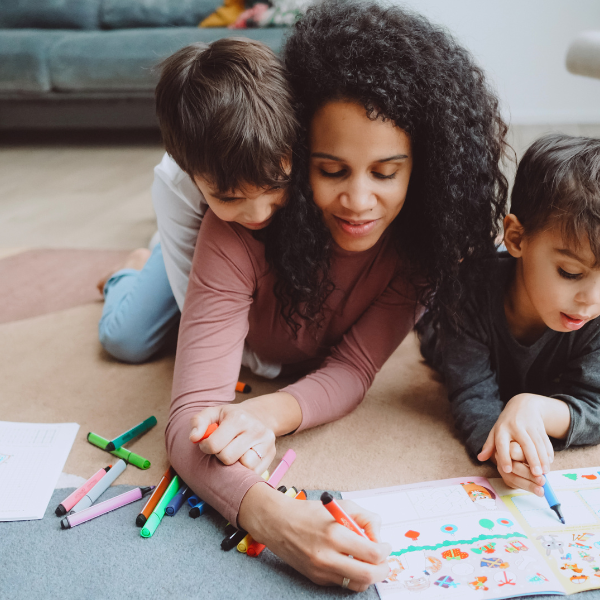
Consistency in positive parenting practices is key to lasting results.
Raising Vibration is a Journey
In the journey of raising a child, it’s important to remember that perfection is not the goal. Instead, it’s about making progress and consistently implementing positive steps towards raising their vibration. These eight steps, when practiced consistently, will not only nurture emotional resilience and positive energy in your child, but also lay the foundation for their lifelong well-being. As the saying goes, “A journey of a thousand miles begins with a single step.” So take that first step and watch your child’s vibration soar. Remember, you are investing in their long-term happiness and success. As we continue on this journey, let’s keep our eyes open to new ideas and innovations that will help us raise the vibration of our children and the world. As the famous quote by Maya Angelou goes, “Do the best you can until you know better. Then when you know better, do better.” So let’s keep learning, growing, and raising vibrations, together.
Your Next Steps
Ready to start raising your child’s vibration? Begin with one step that resonates most with you and gradually incorporate others. Remember, small consistent actions create lasting change.
Leave a Reply